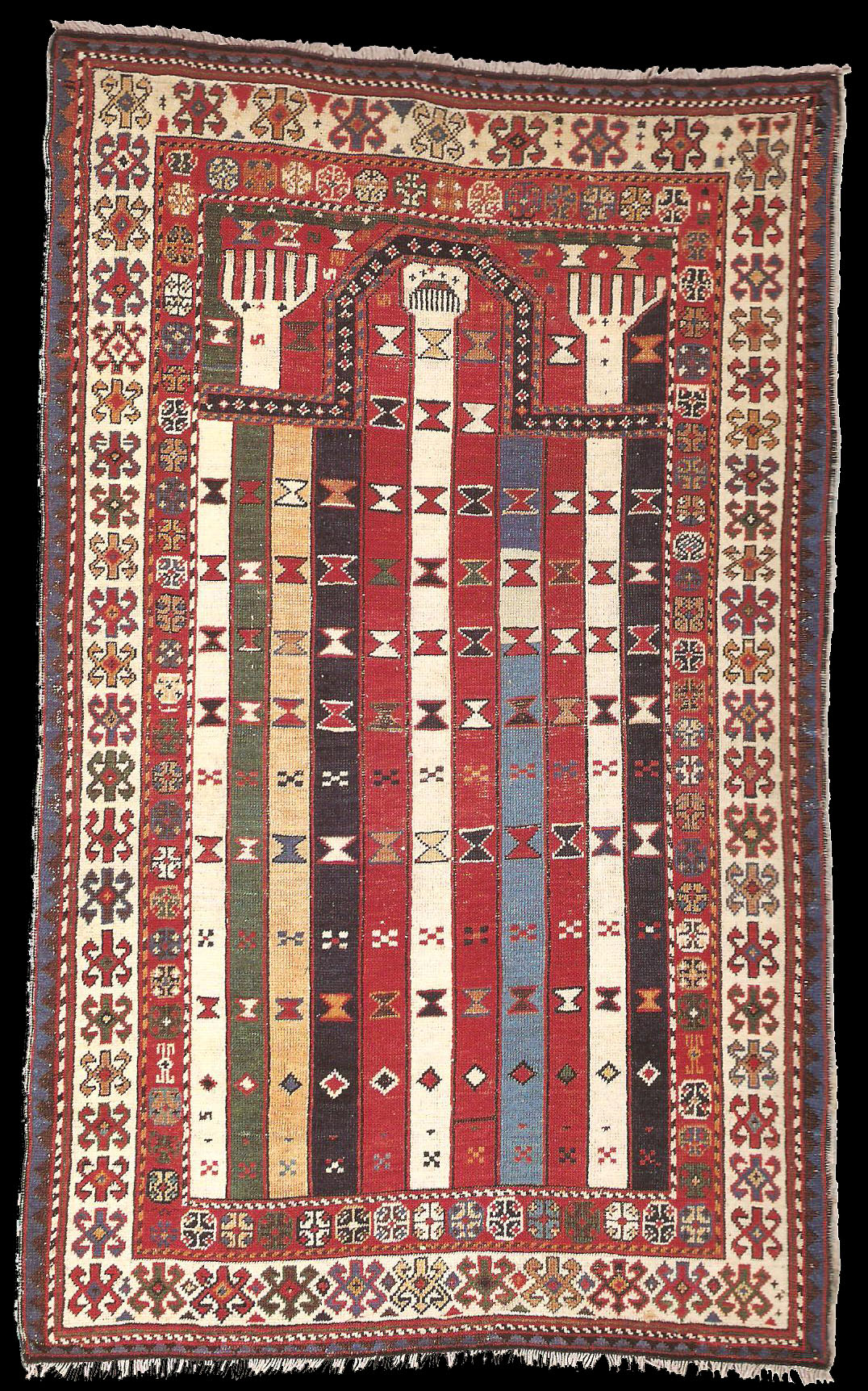|
AKSTAFA
1st half 19th century
101 x 161cm (3'4" x 5'3")
This rug is unusual for its striped field. No other such Akstafa example is
known. A number of characteristic Akstafa features are also included,
however: the hooked border, the dotted arch, the 'hand prints' in the
spandrels, the comb beneath the arch and the light blue selvedge. This rug
is a good illustration of the talent of Caucasian weavers to freely borrow
major design elements from other districts, whilst still producing pieces
with a strong indigenous character and integrity.
Writing about a similar example, which he assigned to Karabagh. Eberhart
Herrmann explained that the five fingers in the hand prints symbolize five
important religious personages of Shi'ite Islam: Mohammed, Ali, Fatima,
Hassan and Hossein. His example, dated AH 1293 (1876 AD), has a very similar
vertically striped field but is decorated with boteh instead of the
geometric motifs of this example, and also differs in the shape of the arch
(The rug has a triangular cartouche enclosing the date beneath it. An
example related to Hermann's, also with a striped field and boteh, was
offered at Skinner's, 5 Dec. 1988, lot 155).
published at Ralph Kaffel's Caucasian Prayer Rugs as plate 87
 |

